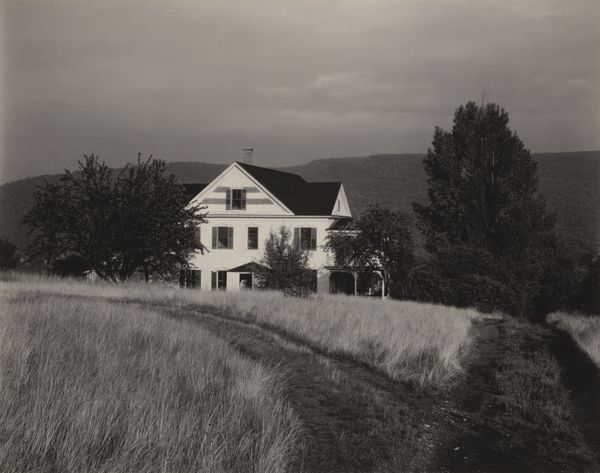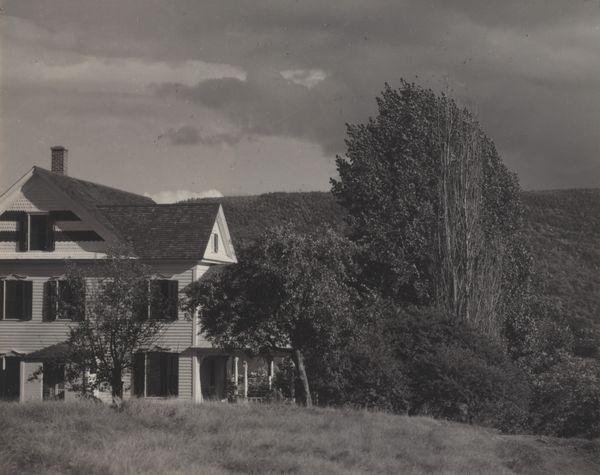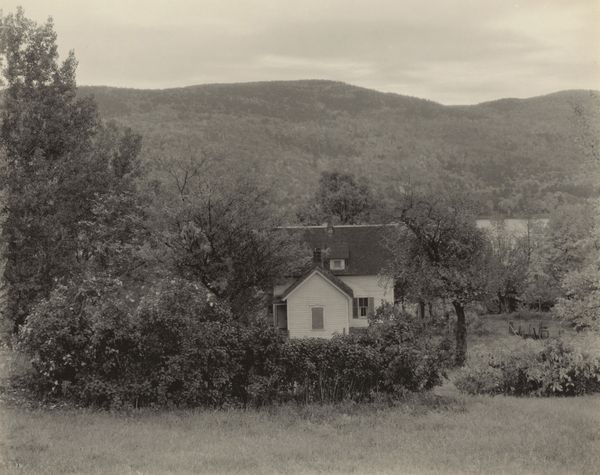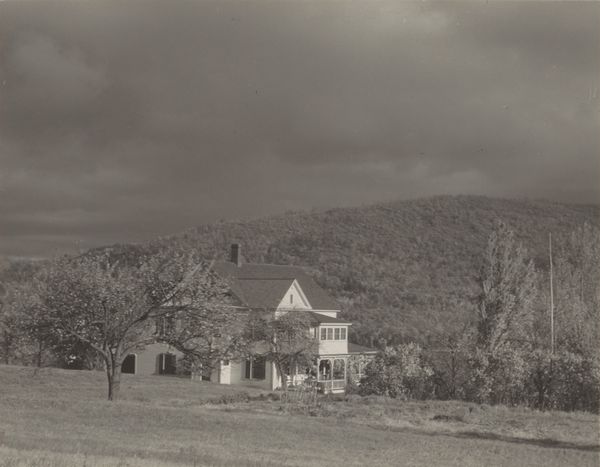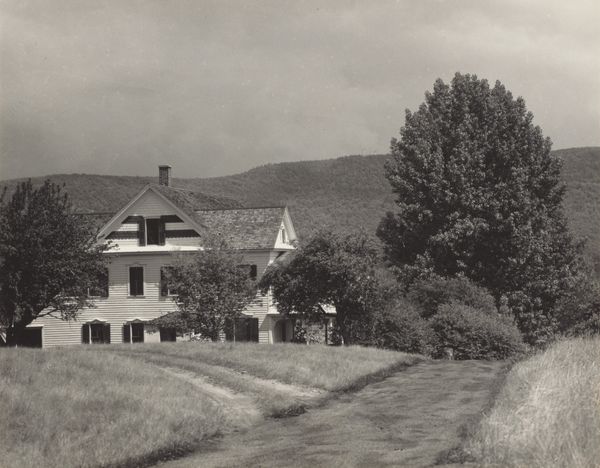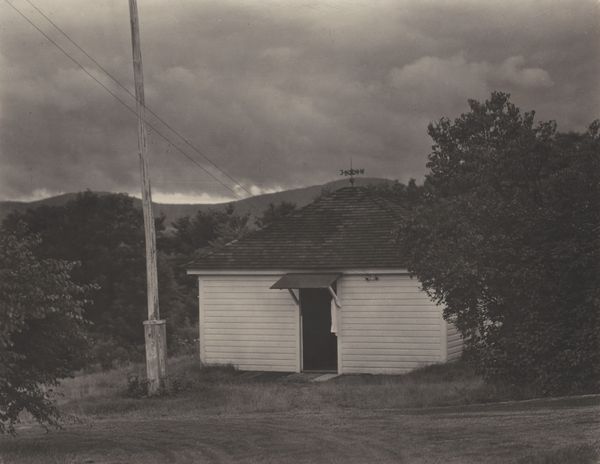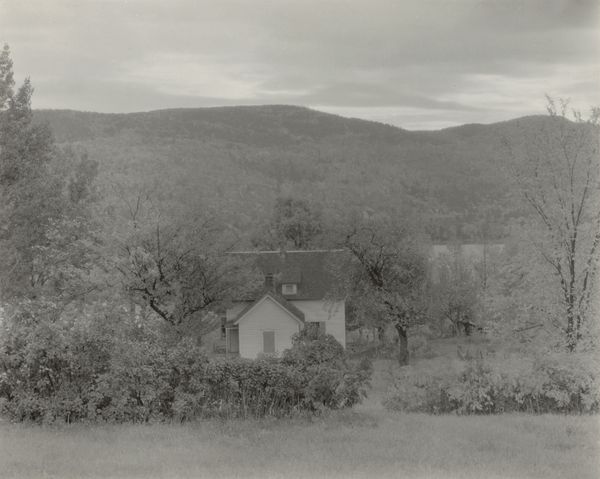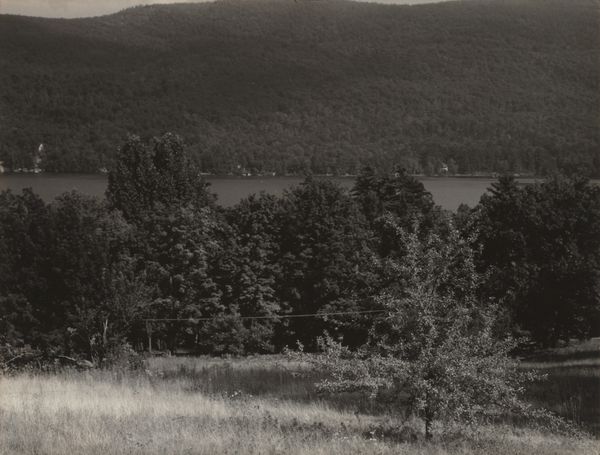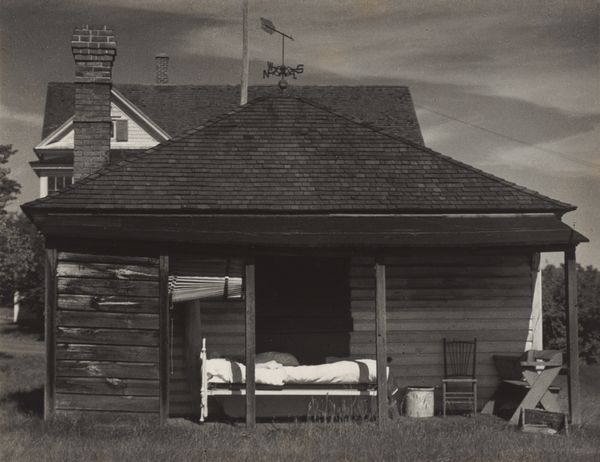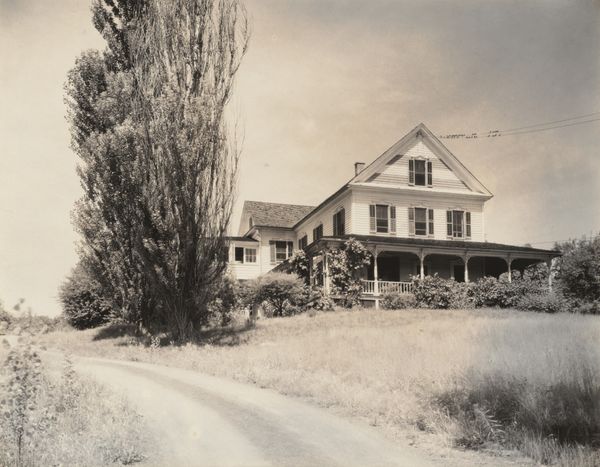
Dimensions: sheet (trimmed to image): 18.6 × 23.6 cm (7 5/16 × 9 5/16 in.) mount: 54.4 × 45.1 cm (21 7/16 × 17 3/4 in.)
Copyright: National Gallery of Art: CC0 1.0
Editor: So, here we have Alfred Stieglitz's "House and Trees, Lake George" from 1932, a gelatin silver print. It feels like a very classic American scene. Almost... nostalgic? What's your take on it? Curator: It's deceptively simple, isn't it? At first glance, a peaceful landscape, but Stieglitz was deeply engaged with social issues. How does the idealized representation of rural America in this photo participate in – or perhaps even mask – the social and economic realities of the 1930s? Think about the Dust Bowl, the Great Depression… Editor: I hadn't considered that. It feels so separate from those issues. The house looks so… established. Curator: Exactly. The house as a symbol of stability, permanence, but for whom? Whose story is being told, and whose is being omitted? We should consider the political implications of focusing on the tranquility of the landscape during a time of widespread hardship. Where are the people? The migrant workers? The unemployed? Editor: That shifts everything. It’s no longer just a pretty picture, but a deliberate choice to highlight a certain narrative. Curator: Precisely! And consider Stieglitz's relationship with Georgia O'Keeffe, the gender dynamics in their artistic partnership. Does this landscape also speak to a particular vision of femininity and domesticity? Editor: It's amazing how one photo can hold so many layers of meaning, especially when we start thinking about what isn't shown. Curator: Absolutely. And hopefully prompts us to question the power structures inherent in representation itself. Art isn't made in a vacuum, but shaped by very real forces of identity and politics.
Comments
No comments
Be the first to comment and join the conversation on the ultimate creative platform.
